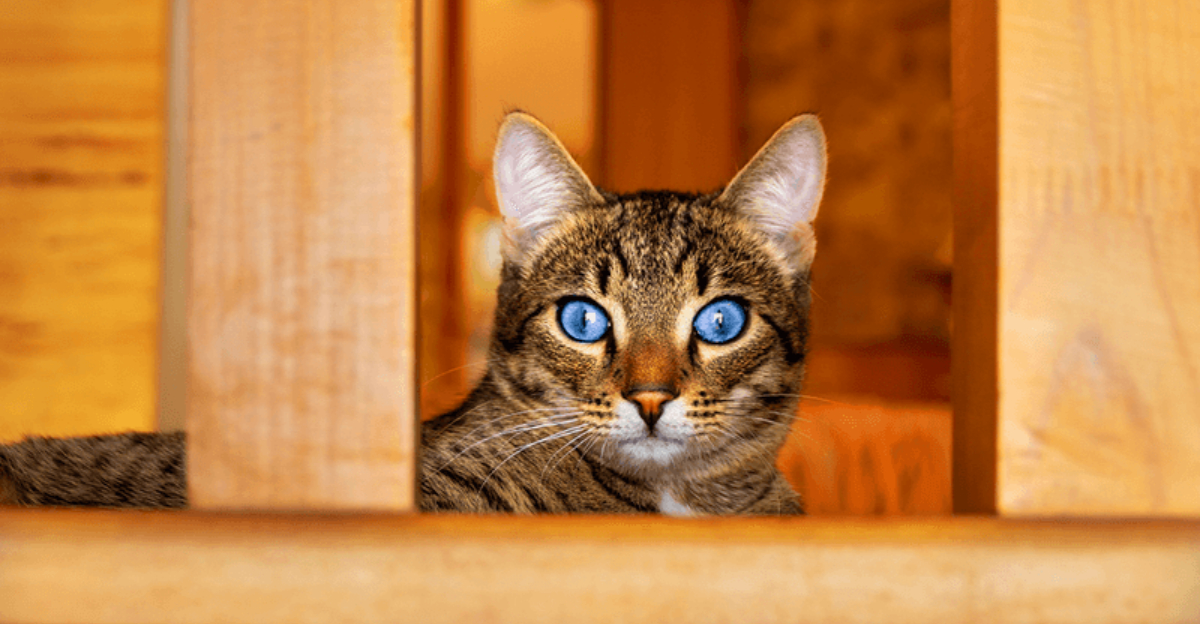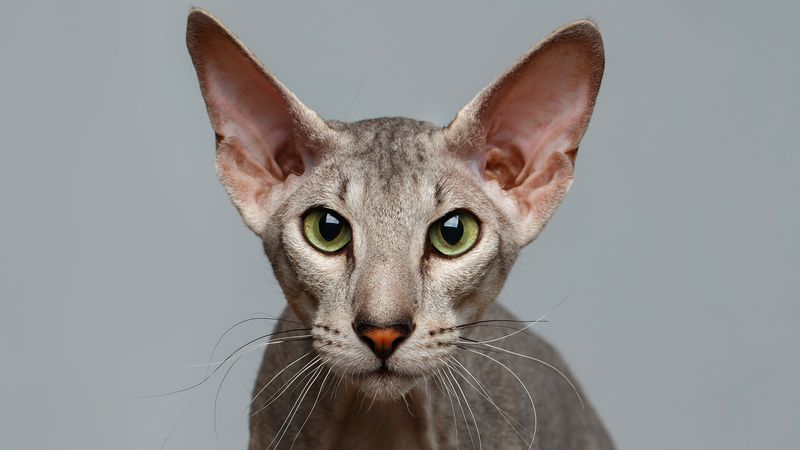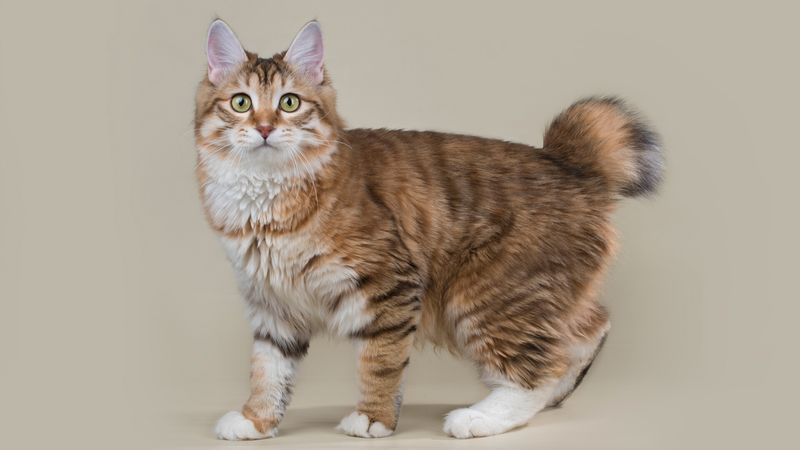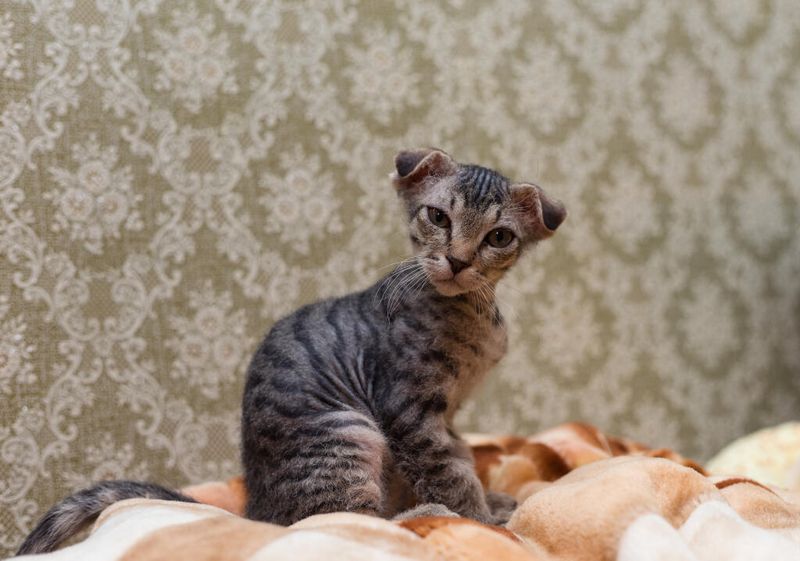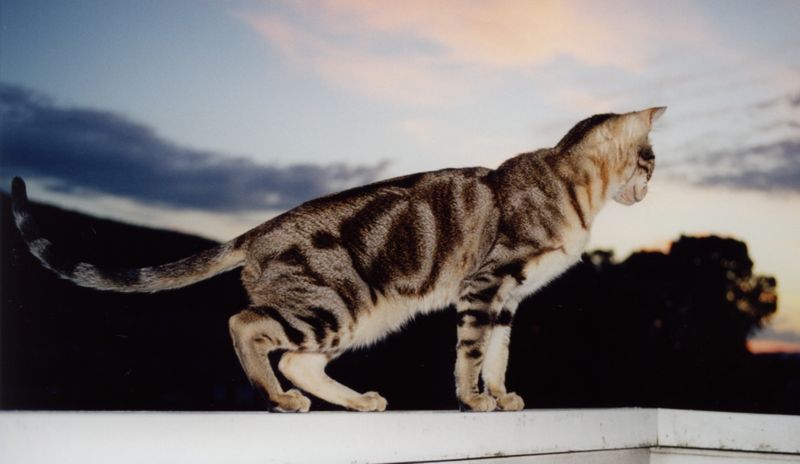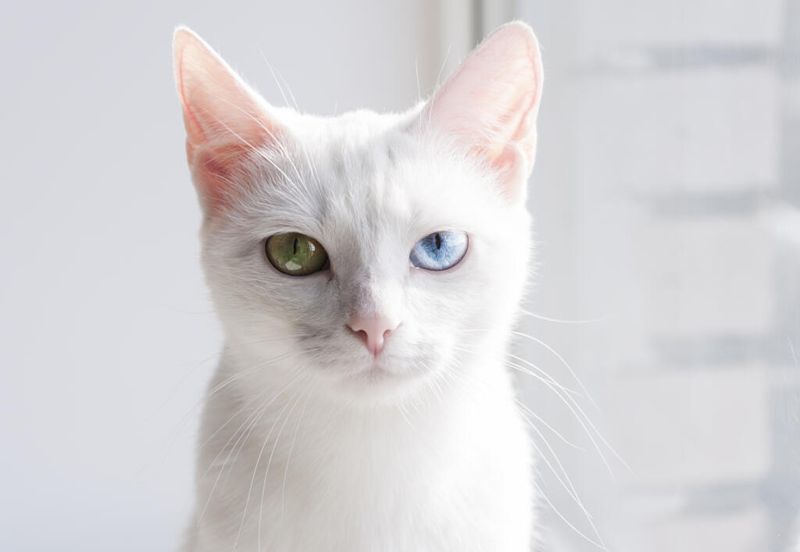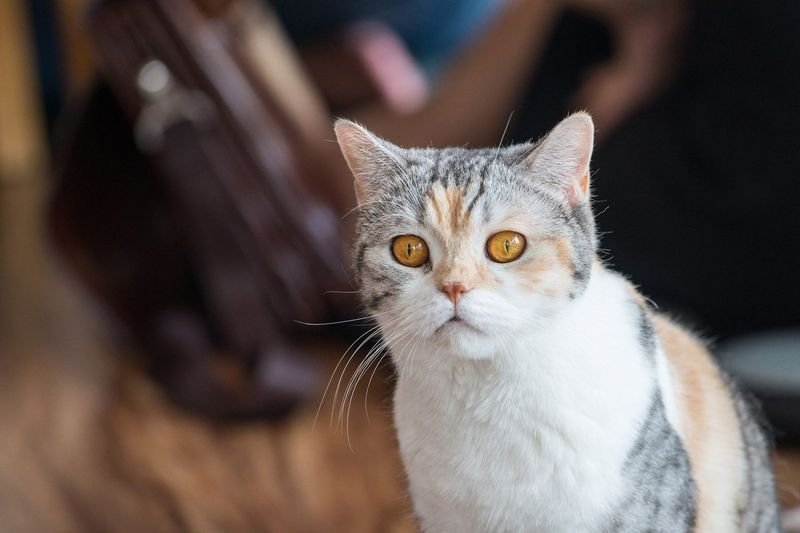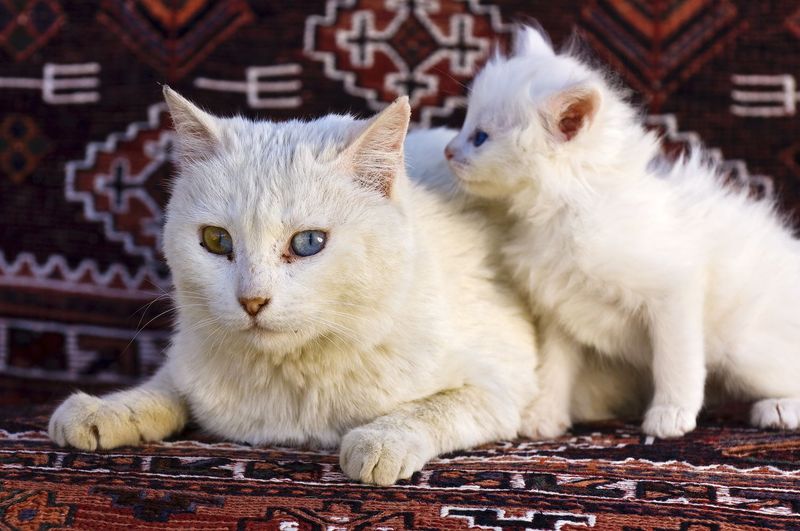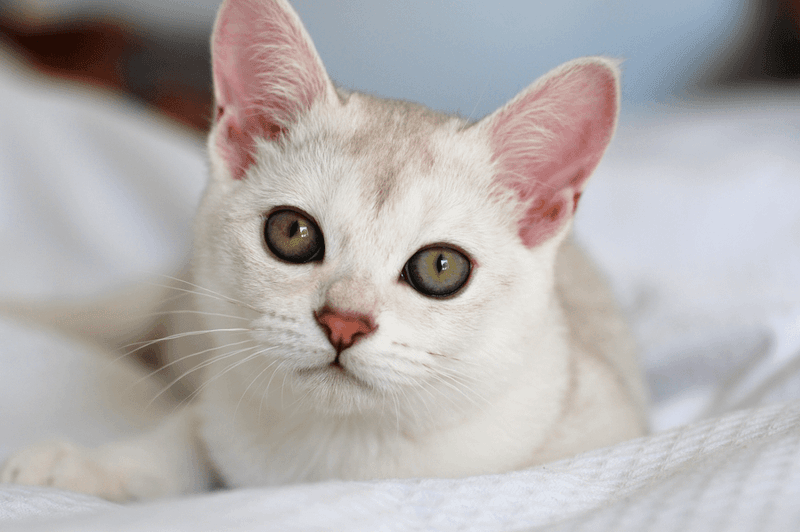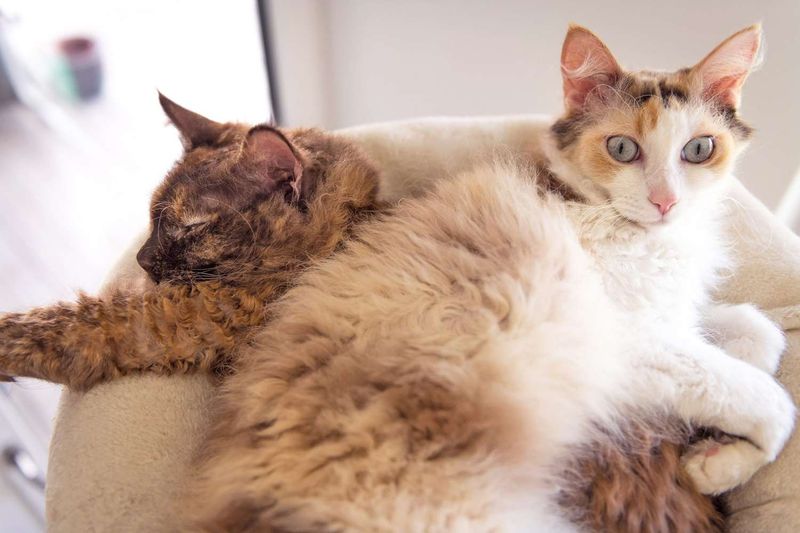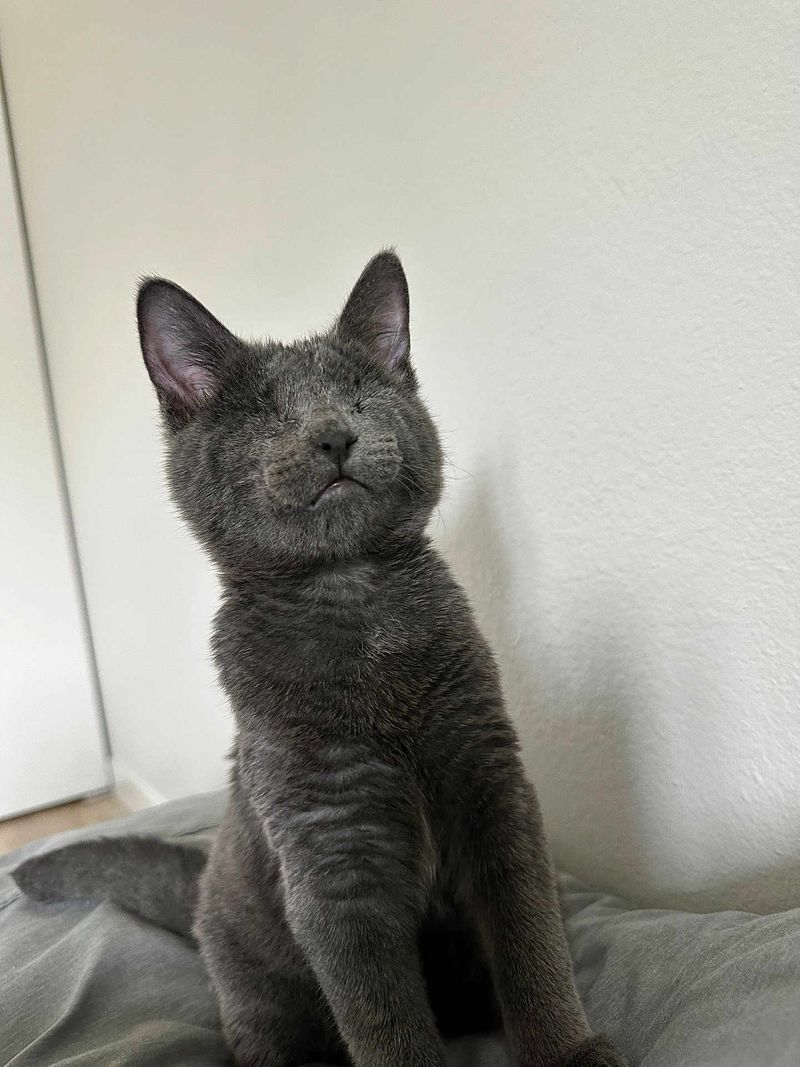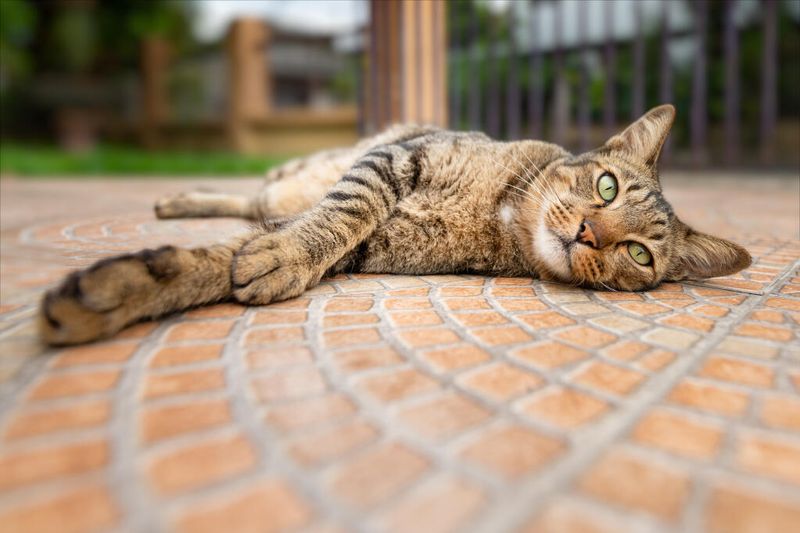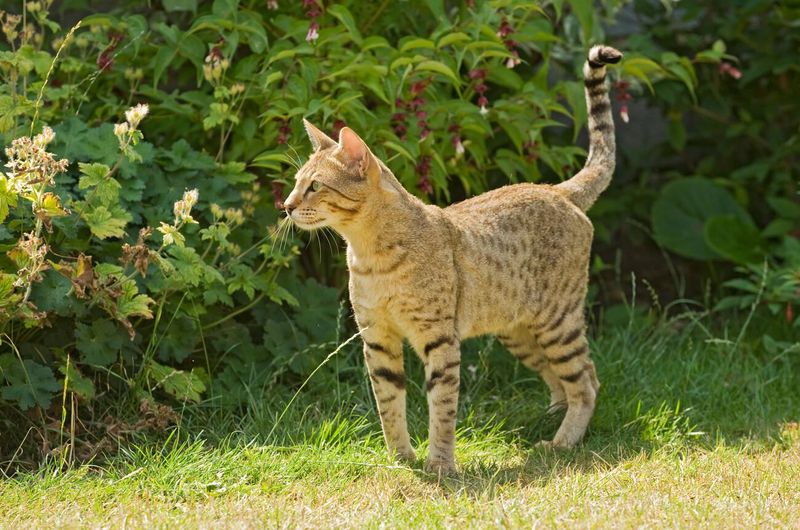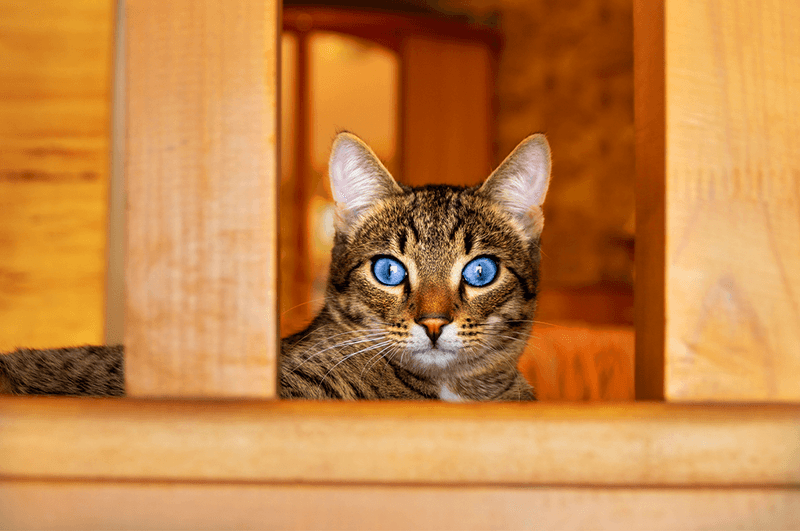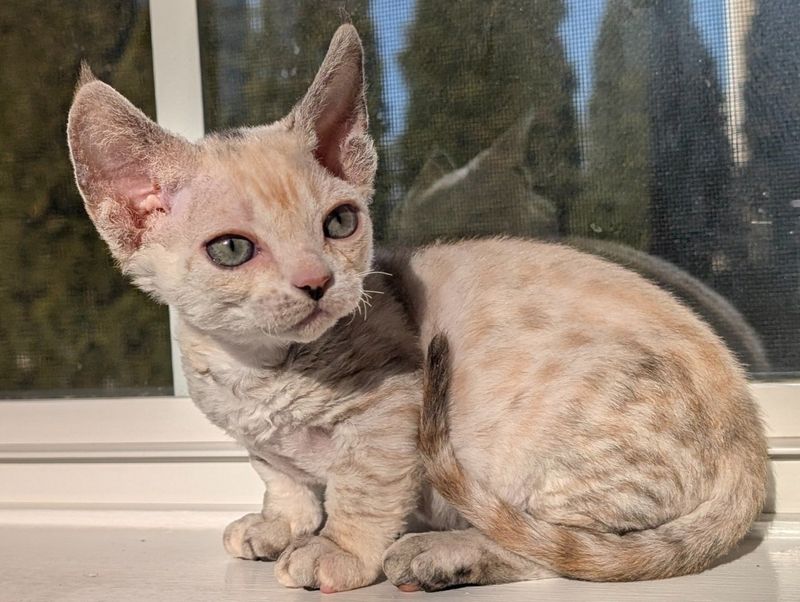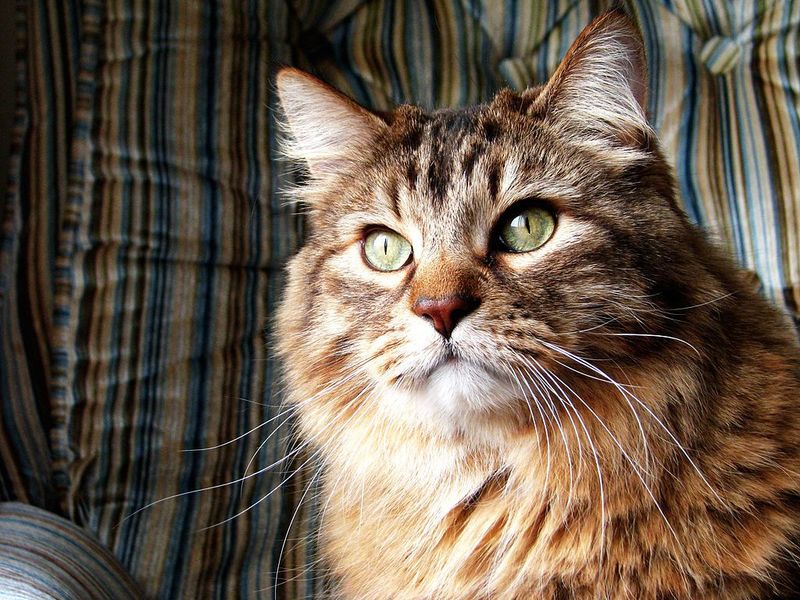📖 Table of Content:
Cats come in all shapes, sizes, and personalities, but some feline friends stand out from the crowd. Beyond the common tabbies and calicos lies a world of extraordinary cat breeds that few people ever get to meet. These rare beauties have unique features, unusual histories, and special traits that make them truly one-of-a-kind companions.
1. Peterbald
Originating from Russia in 1994, the Peterbald combines elegance with an almost alien appearance. Their hairless or fine-coated bodies feel like warm suede to the touch. Despite their somewhat unusual look, these cats have incredibly affectionate personalities.
Peterbalds form strong bonds with their humans and often follow them from room to room. They’re known for using their paws like hands to explore objects and touch their owners’ faces. These intelligent felines require regular skin care since they lack the protective fur of other cats. Fun fact: Peterbalds can actually change their coat type throughout their lives, sometimes developing more hair as they age.
2. Kurilian Bobtail
Named after the Kuril Islands between Russia and Japan, these cats sport naturally bobbed tails that resemble pom-poms. Each Kurilian’s tail is unique – some have several curved vertebrae while others display spiral or zigzag patterns. These medium-sized powerhouses are excellent hunters with strong jumping abilities.
Their thick double coats protect them in harsh weather, reflecting their wild island origins. Despite their rugged background, Kurilians are surprisingly gentle and playful with family members. They communicate with soft chirping sounds rather than typical meows. Unlike many breeds, Kurilians enjoy water and may join you during shower time or play with dripping faucets.
3. Ukrainian Levkoy
The Ukrainian Levkoy combines the folded ears of a Scottish Fold with the hairlessness of a Sphynx. Created in Ukraine in 2004, these cats have a truly distinctive appearance with their angular faces and folded ears giving them an almost dog-like look.
Social butterflies by nature, Levkoys thrive on attention and interaction. They follow their owners everywhere and engage enthusiastically in family activities. Their lack of fur means they feel warm to the touch and need protection from both cold temperatures and excessive sun exposure. Regular bathing keeps their skin healthy since they don’t have fur to absorb natural oils. These rare felines remain relatively unknown outside Eastern Europe.
4. Sokoke
From the forests of Kenya comes the Sokoke, one of the world’s rarest domesticated cats. Their wild-looking coats feature distinctive modified tabby patterns called ‘African tabby’ or ‘ticked tabby’ that once helped them blend into forest floors.
Athletic and agile, Sokokes move with the grace of their wild ancestors. Their long legs and light bodies allow them to make impressive vertical jumps. These cats bond deeply with their chosen humans but often remain cautious around strangers. Conservation efforts saved this breed from extinction in the 1970s when a small population was discovered living near Kenya’s Arabuko-Sokoke Forest. Today, fewer than 100 purebred Sokokes exist worldwide, making each one a living treasure.
5. Khao Manee
Royal cats of ancient Siam (now Thailand), Khao Manees were once kept exclusively by Thai royalty. Their name means ‘white gem,’ perfectly describing their pristine white coats and jewel-like eyes. Most striking are their eyes – often odd-colored with one blue and one gold, or sometimes both brilliant blue. Legend claims these cats bring good fortune to their owners.
Khao Manees have muscular bodies despite their elegant appearance and move with surprising athleticism. Their voices range from soft chirps to loud calls when they want attention. This breed remained virtually unknown outside Thailand until 1999. The Thai government still considers them a national treasure, and pure specimens remain exceedingly rare outside their homeland.
6. American Wirehair
Born from a spontaneous mutation in a barn cat litter in upstate New York in 1966, the American Wirehair stands out for its uniquely textured coat. Each hair is crimped, hooked, or bent, creating a springy, dense feel similar to steel wool but surprisingly soft to touch.
These cats maintain the hardy constitution of their farm cat ancestors. They excel as mousers but balance this working spirit with a relaxed, easygoing personality at home. American Wirehairs enjoy interactive play but don’t demand constant attention. Despite being recognized as a distinct breed for decades, American Wirehairs remain one of the rarest cat breeds in the world. Fewer than 100 kittens are registered annually, making each one a special find for cat enthusiasts.
7. Turkish Van
Known as the ‘swimming cat,’ the Turkish Van developed naturally around Lake Van in Turkey’s mountainous region. Their most distinctive feature is their unique coloration – predominantly white with colored markings only on the head and tail, creating what breeders call the ‘van pattern.’ Unlike most cats, Turkish Vans genuinely enjoy swimming.
Their water-resistant coats and powerful bodies make them natural swimmers. These cats mature slowly, often not reaching full size until 3-5 years old. Turkish Vans are energetic and playful well into adulthood. They form strong bonds with their families but tend to select one person as their special favorite. Their rarity stems partly from strict export limitations from Turkey, where they’re considered a national treasure.
8. Burmilla
A happy accident created the Burmilla when a Chinchilla Persian accidentally mated with a Burmese in the United Kingdom in 1981. The resulting kittens combined the best of both worlds – the silvery sheen of the Persian with the muscular build of the Burmese. Their most captivating feature is their makeup-like eye lining that makes them look perpetually glamorous.
Burmillas maintain a kitten-like playfulness throughout their lives. They’re known for their gentle, undemanding nature that fits well with busy households. While their appearance suggests high maintenance, Burmillas actually require minimal grooming compared to other medium-haired breeds. Their short to medium coat has a distinctive silver sheen that catches the light beautifully.
9. LaPerm
Born to a normal-coated barn cat in Oregon in 1982, the first LaPerm kitten surprised everyone by being completely bald at birth. Even more surprising was when curly hair began growing in! This natural mutation created cats with soft, bouncy curls ranging from loose waves to tight ringlets.
LaPerms have outgoing, affectionate personalities and often use their paws to tap humans for attention. Their curls feel different from any other cat breed – springy yet incredibly soft, almost like mohair. These cats shed less than straight-haired breeds, making them somewhat easier for allergy sufferers. Each LaPerm’s curl pattern is unique, like a human fingerprint. The breed remains rare, with only a few hundred registered worldwide each year.
10. Korat
Silver-blue beauties from Thailand, Korats have been documented in Thai literature for over 600 years. Their heart-shaped faces and luminous green eyes make them instantly recognizable. Traditional Thai culture considers them symbols of good fortune. Korats have short, single coats with each hair tipped with silver, creating a halo effect when light hits them.
These intelligent cats form deep bonds with their families and often learn to fetch small objects. They’re unusually sensitive to mood and often offer comfort when their humans feel sad. In Thailand, Korats were traditionally given as pairs to newlyweds to ensure good luck. Their rarity comes from strict breeding standards and the small gene pool, as all Korats trace back to cats imported from Thailand.
11. Dragon Li
Also known as Chinese Li Hua, the Dragon Li is considered China’s only natural domestic breed, developing without human intervention over thousands of years. Their distinctive brown mackerel tabby pattern features clear, sharp stripes that Chinese folklore compares to dragon markings. Dragon Lis have muscular bodies built for hunting, with strong legs that allow them to jump impressive heights. Their intelligence and problem-solving abilities are legendary among Chinese cat enthusiasts.
They can often figure out how to open doors and cabinets. Despite their wild appearance, these cats form loving bonds with their families while maintaining an independent streak. The Chinese government only recently allowed their export, making them extremely rare outside Asia.
12. Serengeti
Created in the 1990s by crossing Bengals and Oriental Shorthairs, the Serengeti was designed to resemble wild African serval cats without actually using wild blood. Their extraordinarily long legs and large, rounded ears create a striking silhouette unlike any other domestic cat.
Serengetis can jump up to 7 feet high from a standing position thanks to their powerful hind legs. Their spotted coats come in several color variations, with gold and black being the most dramatic. These active cats need plenty of vertical space and interactive play. Despite their wild appearance, Serengetis are completely domestic and form strong bonds with their humans. They’re known for being vocal and will carry on lengthy “conversations” with their owners.
13. Ojos Azules
The rarest cat breed in the world, Ojos Azules (Spanish for “blue eyes”) was discovered in New Mexico in 1984. Their defining characteristic is their deep sapphire blue eyes, which occur naturally without the colorpoint gene that creates blue eyes in Siamese cats. Unlike other blue-eyed cats, Ojos Azules can have any coat color or pattern, not just white.
The gene responsible for their eye color is so rare that at one point, only 10 confirmed cats existed worldwide. Breeding programs proceed with extreme caution because when two blue-eyed cats mate, serious cranial defects can occur in kittens. These medium-sized cats have sweet, attentive personalities and form strong bonds with their families. Currently, fewer than 100 exist worldwide.
14. Minskin
Developed in Boston in 1998, the Minskin combines the short legs of the Munchkin with the hairlessness of the Sphynx. The result is a small cat with fur points (face, ears, legs, and tail) and a mostly hairless body – often described as wearing little furry boots.
Despite their short stature, Minskins are surprisingly agile and playful. They navigate their environment by scooting around corners and mastering their own unique way of jumping. These cats stay kitten-sized throughout their lives, rarely weighing more than 6 pounds. Their velvety skin feels like a warm peach to the touch. Minskins have outgoing, social personalities and get along well with children, other cats, and even dogs. With fewer than 1,000 registered worldwide, they remain an extremely rare breed.
15. Norwegian Forest Cat
Majestic giants of Scandinavia, Norwegian Forest Cats evolved naturally to survive harsh Nordic winters. Their water-resistant double coats and tufted paws served as natural snowshoes for these skilled hunters. Viking legends mention these cats, suggesting they’ve been companions to Norsemen for over a thousand years.
Adult males can weigh up to 20 pounds, with females slightly smaller. Despite their wild appearance, they have sweet, patient temperaments. Their thick ruffs and bushy tails give them a distinctly lion-like appearance, especially in their full winter coat. These cats mature slowly, often not reaching full size until 5 years old. While more common in Northern Europe, purebred Norwegian Forest Cats remain relatively rare in North America and other regions.
